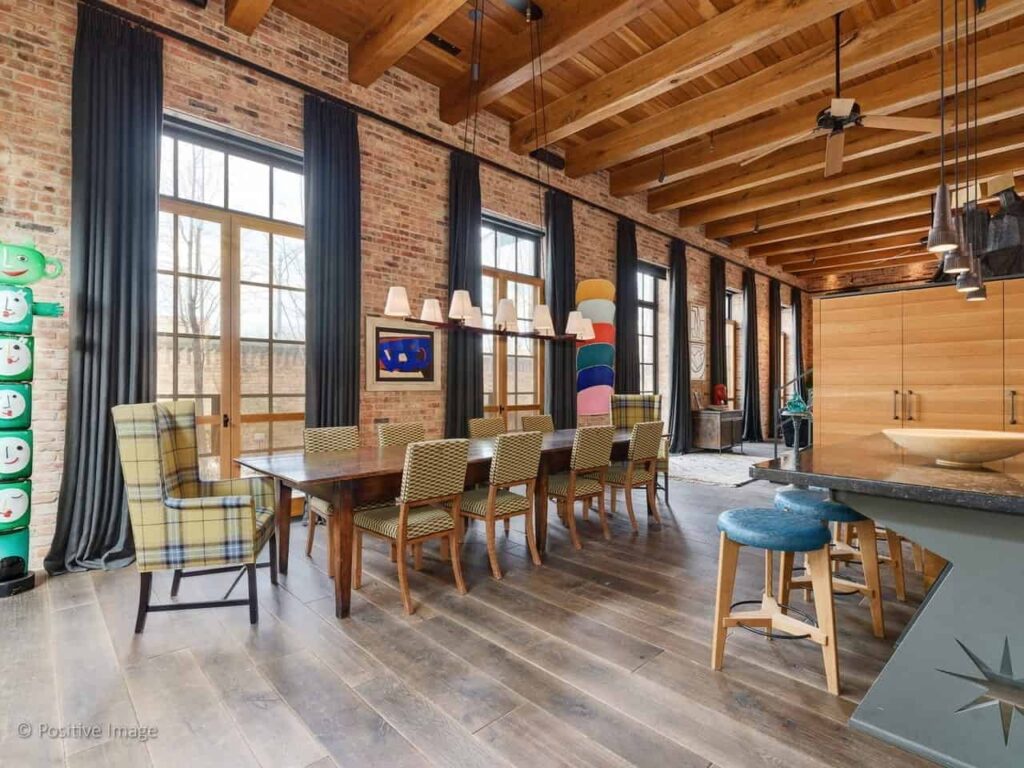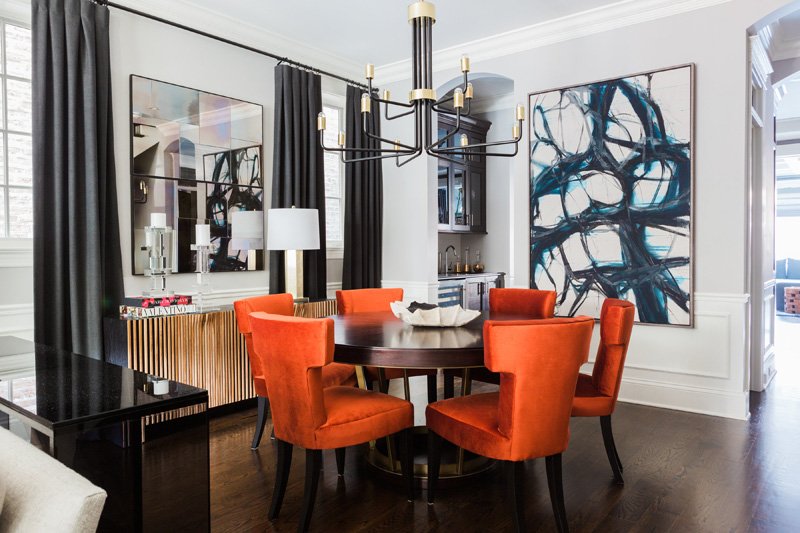The industrial aesthetic, with its raw materials and exposed elements, has become increasingly popular in home design. Its inherent blend of ruggedness and sophistication makes it a perfect choice for a dining room, creating a space that’s both stylish and functional. But designing an industrial dining room requires careful consideration to balance the industrial elements with comfort and warmth. This comprehensive guide will delve into the key aspects of creating a captivating industrial dining space, from choosing the right furniture and lighting to incorporating the perfect finishing touches.
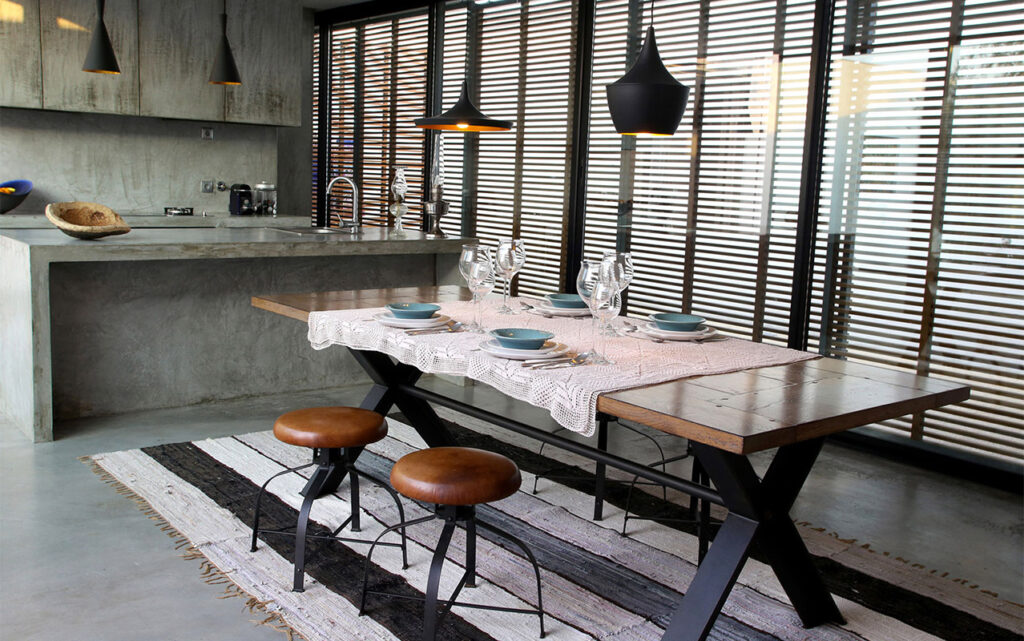
Understanding the Industrial Style
Before diving into the specifics, let’s establish a clear understanding of the industrial style. Its core elements revolve around celebrating the raw beauty of materials and showcasing the building’s structural features. Think exposed brick, metal pipes, concrete floors, and a neutral color palette. The overall effect should evoke a sense of history and authenticity, often mirroring the aesthetic of converted warehouses or factories.
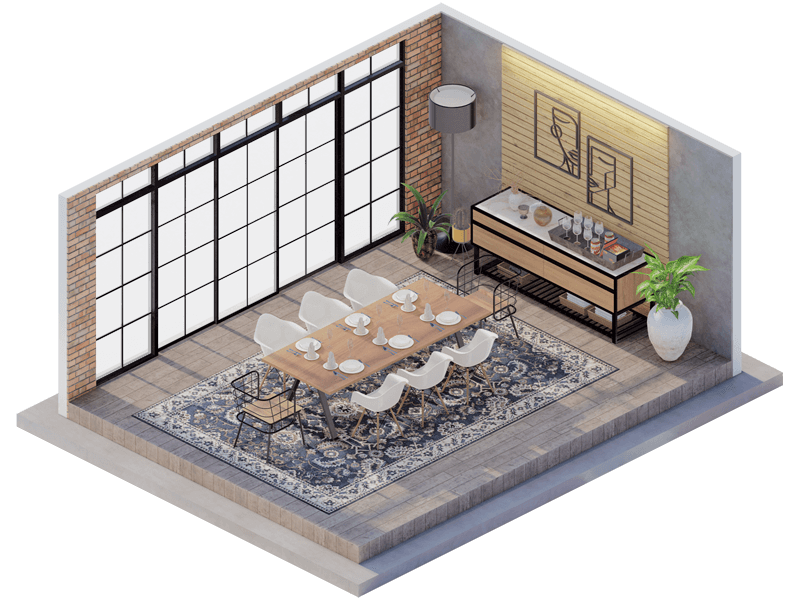
However, the industrial style isn’t just about bare bones and coldness. It’s about finding the right balance between industrial elements and inviting, comfortable features. This involves incorporating textiles, warm lighting, and well-chosen accessories to soften the starkness and create a welcoming atmosphere for dining and socializing.

Choosing the Right Furniture
Furniture selection is paramount in achieving the desired industrial look. The pieces should echo the raw materials and functional design of the style. Consider these options:
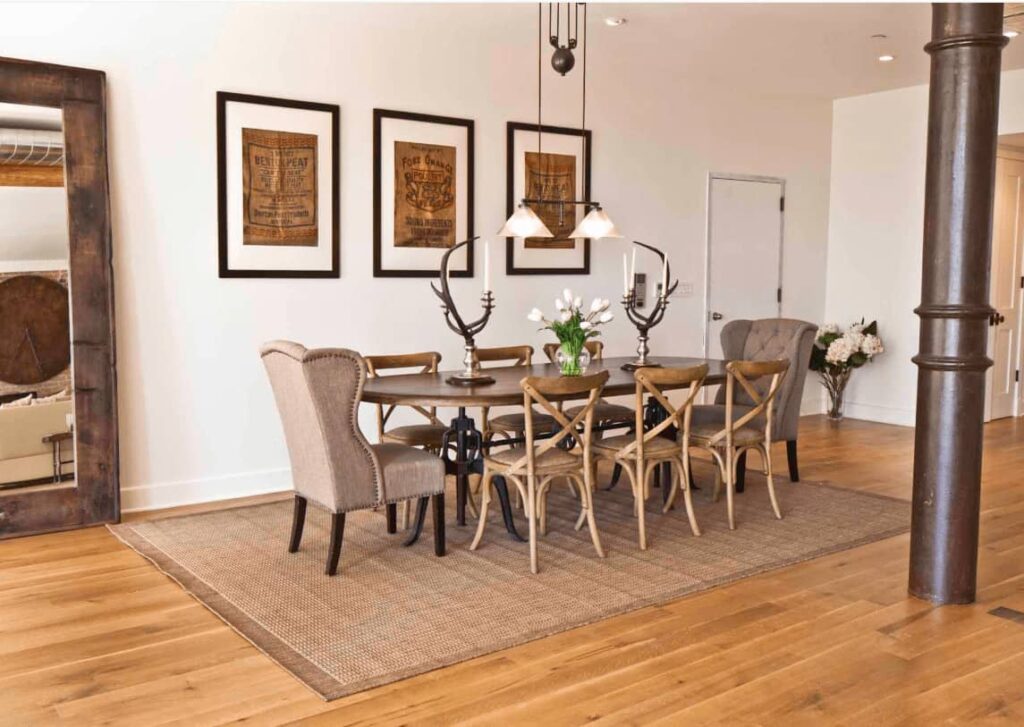
Dining Table: The Heart of the Space
- Metal Dining Tables: Steel or iron tables with a simple, unadorned design are quintessential industrial. Look for tables with a reclaimed wood or concrete top for a blend of textures.
- Wood Dining Tables: Reclaimed wood tables add warmth and character. Choose tables with a rustic finish, perhaps showing signs of wear, to enhance the industrial aesthetic.
- Concrete Dining Tables: Concrete offers a sleek, modern take on the industrial style. Its durability and inherent coolness complement the overall design.
Dining Chairs: Comfort and Style
- Metal Chairs: Metal chairs with simple lines and potentially leather or upholstered seats offer a comfortable and stylish contrast to the table.
- Wooden Chairs: Wooden chairs with a rustic or distressed finish add warmth and visual interest. Consider chairs with metal accents to tie in with other elements.
- Industrial-Style Stools: Metal stools, perhaps with a backrest, can add a touch of casualness and functionality.
Lighting: Setting the Mood
Lighting is critical in creating the right atmosphere. Industrial lighting often features exposed bulbs, metal fixtures, and a focus on functionality. Consider these options:
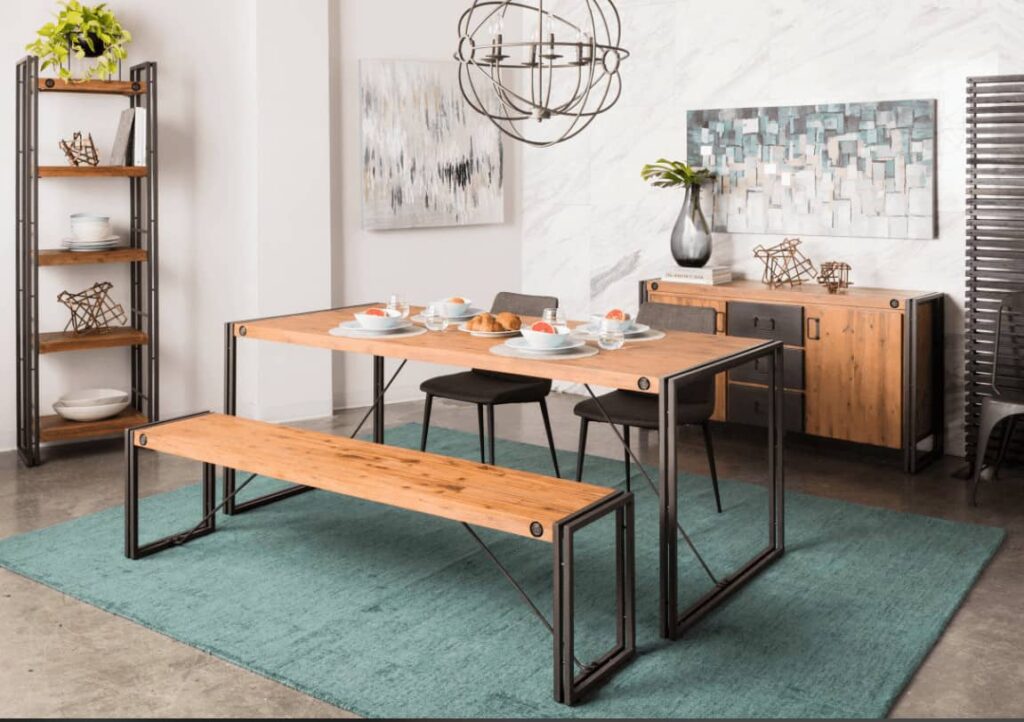
- Pendant Lights: Industrial-style pendant lights with metal shades or exposed bulbs are a great focal point above the dining table.
- Track Lighting: Track lighting offers flexible illumination and can highlight specific areas or artwork.
- Wall Sconces: Metal wall sconces add ambient lighting and can create a more intimate setting.
- Edison Bulbs: These bulbs add a vintage touch and enhance the overall industrial aesthetic.
Incorporating Industrial Elements
Beyond furniture and lighting, consider these elements to enhance the industrial vibe:
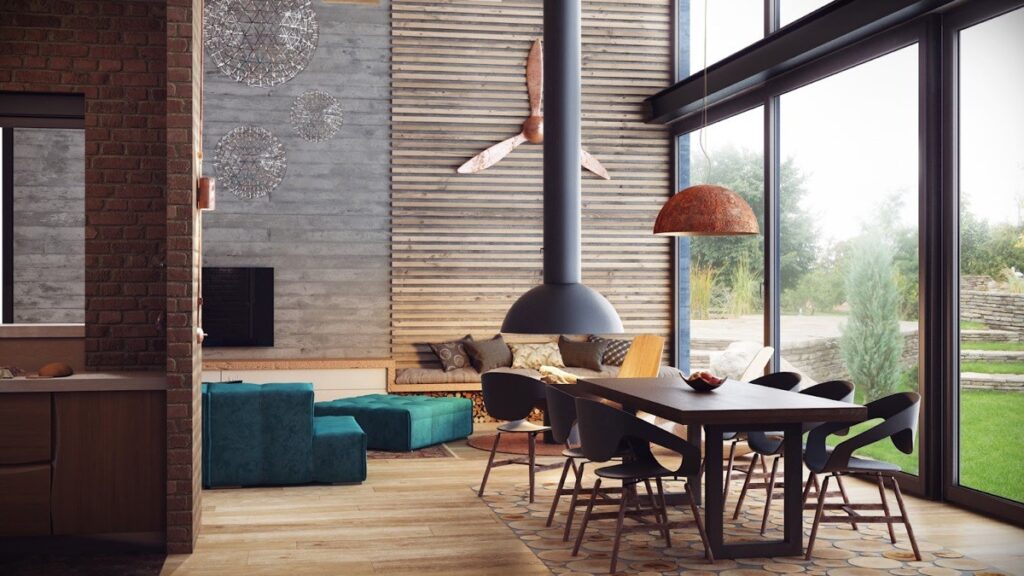
- Exposed Brick Walls: If you have exposed brick, leave it as is or consider a light cleaning to maintain its rustic charm.
- Exposed Pipes and Ducts: Rather than hiding pipes and ducts, embrace them as a defining feature of the industrial style.
- Concrete Floors: Concrete floors contribute significantly to the industrial look. They can be polished for a sleek finish or left with a more raw texture.
- Metal Accents: Incorporate metal accents throughout the space, such as metal shelving, decorative elements, or picture frames.
Adding Warmth and Texture
To counterbalance the potentially harsh elements of the industrial style, incorporate warmth and texture through:
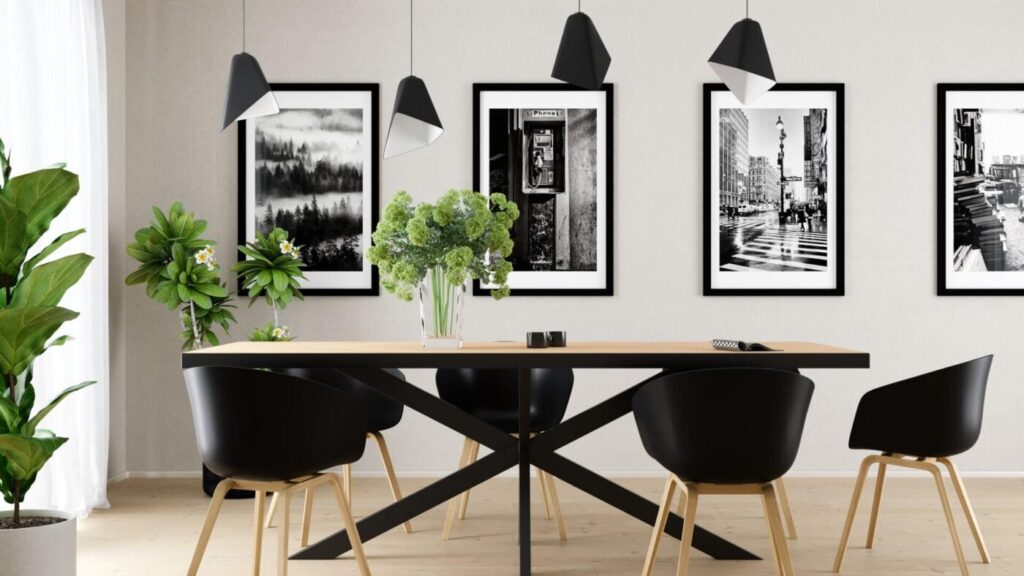
- Rugs: A large rug under the dining table adds warmth and softens the hard flooring.
- Textiles: Use textured textiles, such as linen or burlap, in curtains, cushions, or table runners.
- Plants: Introduce plants to bring life and greenery to the space.
- Artwork: Choose artwork that complements the industrial theme, such as metal sculptures or prints of industrial landscapes.
Color Palette: Neutrals with Pops of Color
The industrial color palette typically features neutrals like gray, black, brown, and white. However, you can introduce pops of color through accessories or artwork to add personality and warmth. Consider using muted tones that complement the industrial aesthetic.
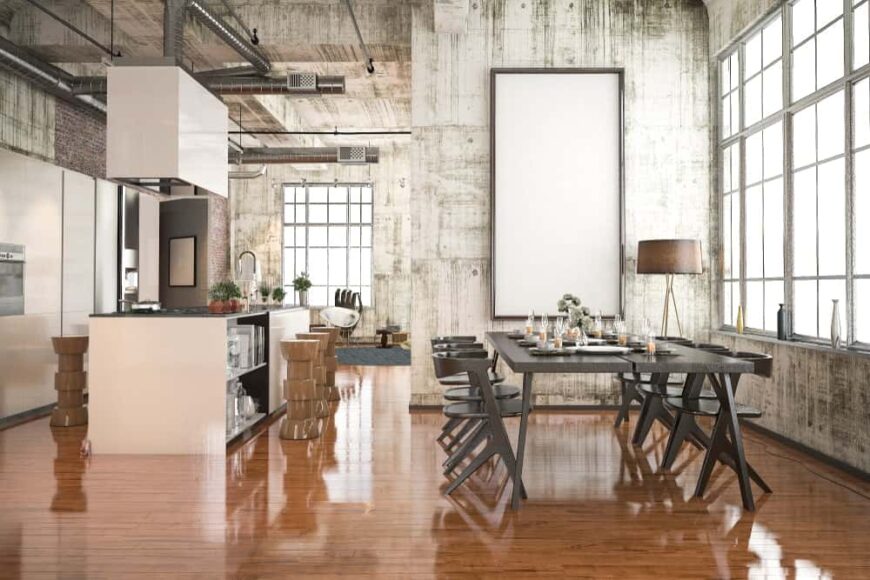
Storage Solutions: Functionality and Style
Industrial-style storage solutions can be both functional and stylish. Consider metal shelving units, repurposed storage containers, or vintage cabinets to keep the dining area organized.
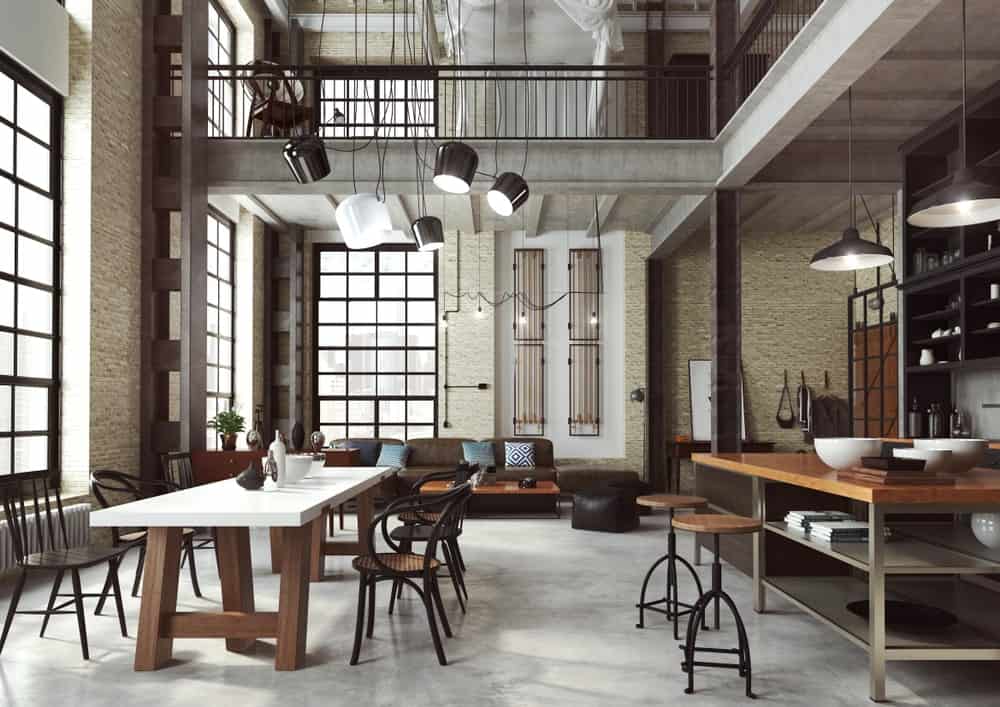
Maintaining the Industrial Aesthetic
The key to maintaining the industrial aesthetic is to avoid clutter and to carefully select items that enhance the overall design. Keep the space clean and uncluttered to allow the raw materials and structural features to shine.
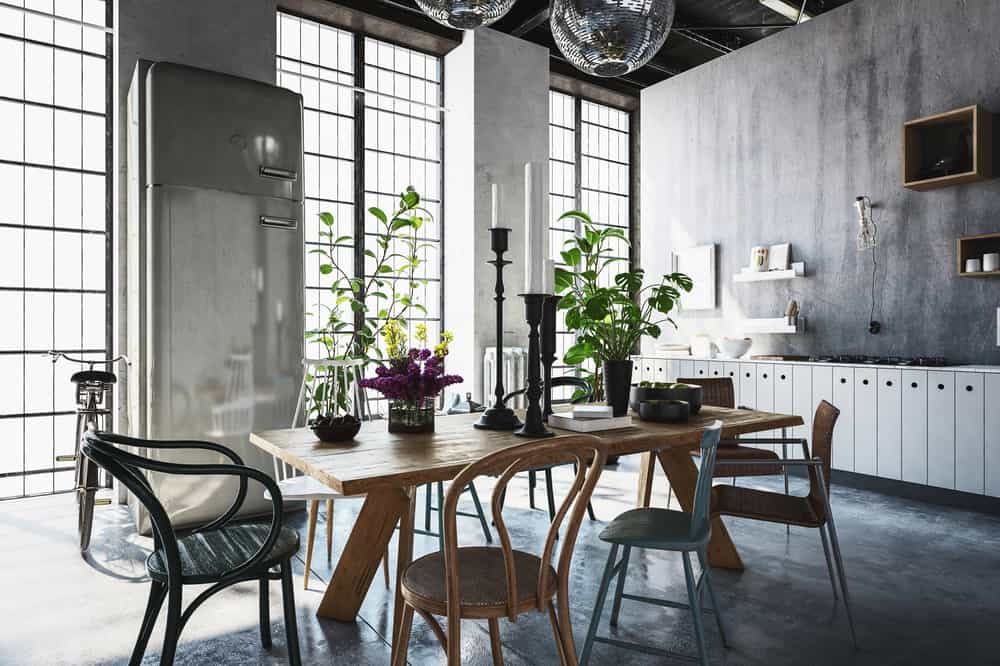
Conclusion: Creating Your Dream Industrial Dining Room
Designing an industrial dining room is about striking a balance between raw materials and inviting comfort. By carefully selecting furniture, lighting, and accessories, you can create a space that is both stylish and functional, reflecting your unique personality and taste. Remember, the industrial style is about celebrating the beauty of raw materials and creating a space that’s both visually striking and genuinely welcoming.
